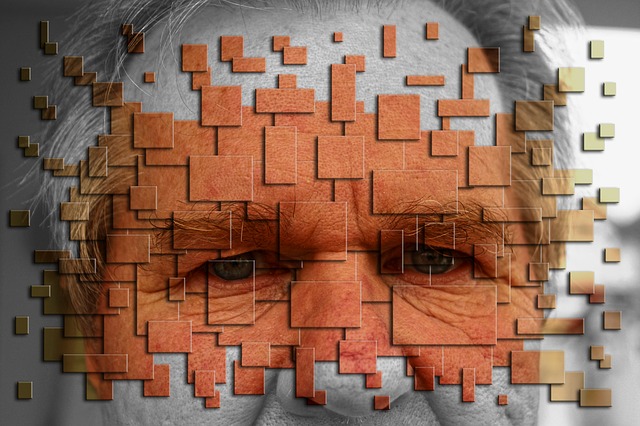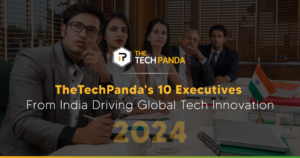Data analytics is changing the way we do business as well as the way we consume it, especially as the dynamics of the way we exist might be changing with the advent of the metaverse. As emerging tech cranks up the ability of organisations to handle high amounts of data, a diverse range of industries lead the data revolution in India.
Big data is larger, more complex data sets, especially from new data sources. According to a report by Techjury, the big data analytics market is set to reach US$103 billion by 2023. The report also states that 97.2% of organisations are investing in big data and AI. The global big data and analytics market is worth US$274 billion, and the global big data market is projected to generate $103 billion in revenue by 2027, according to SiliconANGLE.
Data science fundamentals offer the opportunity to add to and affirm one’s ability to extract information from data sets, understand key data analysis concepts, and use data to help make informed business decisions.
The Tech Panda spoke to RV Raghu the Director of Versatilist Consulting India Pvt. Ltd., and the Ambassador of ISACA, an international professional association focused on IT governance, about how organisations can use big data generated insights in real-time to increase business intelligence.

R. V. Raghu
The world is moving to the metaverse where data rules, making it even more important that all data collected is analysed, understood, and leveraged for benefit and value
“In today’s world, we are almost at the point where a person is becoming equal to her or his data. Historically, data was only available about human behavior. There was always a lag between behavior and causation, which still exists, but the gap is narrower now,” he says.
“For all practical purposes, data was removed from the real world, because it took time to connect the data and the user or customer, even more time to correlate the data for any concrete use and even longer to use the data for designing the next iteration of the product or service,” he adds.
Also, one could only gain data that the customer or user allowed to collect, something that has changed with the rise of digital technologies, which have made data collection easy or easier and discrete.
“In many cases, the data is given away for free or near free by the customer in return for convenience and customisation. All this means that, as the customer interacts with the business, businesses can glean data which allows them to understand the customer in near real time, draw parallels to other similar customers and offer them discounts, special pricing or other offers which can clinch the deal,” he explains.
As the customer interacts with the business, businesses can glean data which allows them to understand the customer in near real time, draw parallels to other similar customers and offer them discounts, special pricing or other offers which can clinch the deal
For example, if someone has searched for a specific product and they are walking past a location where the product is sold, data (e.g., social media data) may allow the business to recognise the customer and offer a discount or other enticement to ensure a purchase. The hospitality and travel industry have moved from recognising the customer as someone uni-dimensionally based on a specific purchase made.
“Data analytics allows greater personalization, allowing the customer’s likes and dislikes to be better understood and translated into a product or service offered at each interaction. So, if a frequent flier likes an aisle seat or likes a specific cuisine, this is translated into what is offered to the customer,” he adds.
How Next-Gen Tech Can Enable Organisations to Handle Big Data
It is estimated that by 2025, 200+ zettabytes of data will be in cloud storage worldwide, which means, to survive and thrive, organisations need to get their hands around data. This data comes in multiple forms as well as from multiple sources i.e., human, and non-human (for example, sensor data). At the same time, data is also being generated in gargantuan quantities in real time.
“All this means that without new technologies, this data is useless,” says Raghu.
The only way to make sense of data is new technologies such as cloud, AI, and ML to crunch data and use it for not just business decision making but also for product and service development. The advantage of these new technologies is that enterprises can make sense of the data and unlock value to better serve not just customers but also delivery increased value to shareholders and stakeholders
He explains that enterprises are banking on the rise of the cloud to store these large quantities of data, artificial intelligence (AI) algorithms to crunch the data and machine learning (ML) to understand the data and enable organisations to make sense of it all. But all this data is not without its challenges, ranging from privacy issues, to security, to bias, and so on.
“The only way to make sense of data is new technologies such as cloud, AI, and ML to crunch data and use it for not just business decision making but also for product and service development. The advantage of these new technologies is that enterprises can make sense of the data and unlock value to better serve not just customers but also delivery increased value to shareholders and stakeholders,” he adds.
A Post-pandemic World Defined by Data
There is a definite uptick in the adoption of advanced analytics, machine learning, and other AI technologies post-pandemic. Data analytics took on a new light in a world where physical presence of a person was compromised.
We live in a world defined by data, says Raghu.
“This is more so post-pandemic where we are moving from a world marked by human presence to one where various substitute for human physical presence are taken as a proxy. Since the human cannot be seen, data about the human has taken the front seat,” he explains.
The pandemic has also ensured that a lot of what we do has gone digital, generating what is called digital exhaust. Digital exhaust is all the information or ‘consumer data’ a user creates as they interact with web sites and services.
AI technologies are the next evolution of computerised systems which can make sense of the large amounts of data, crunch them, identify insights, and see patterns where it seemed like none existed before
“This digital exhaust and legitimate data are being generated in the terabytes and enterprises are scrambling to make sense of it and develop products and services that are tailored to the customer,” he says.
The other side of the rise of a digital world means that we now have better opportunities to customise products and services to meet specific needs.
“All this means that data must be analysed, understood, and leveraged, which is not possible by humans alone. AI technologies are the next evolution of computerised systems which can make sense of the large amounts of data, crunch them, identify insights, and see patterns where it seemed like none existed before,” he relates.
“But it does not end there, these insights are used to design better products and services and engage customers better. Finally, the world is moving to the metaverse where data rules, making it even more important that all data collected is analysed, understood, and leveraged for benefit and value,” he adds.
Indian Organisations & Big Data Analytics
Where do Indian organisations stand with regards to leveraging big data analytics? A diverse range of industries are leading the data revolution in India. BFSI and the health sector probably lead the pack, but others are not far behind. Companies like Paytm, PhonePe, MobiKwik and Policybazaar have applied data analytics to grow their business.
There are several sectors including manufacturing and retail, where players such as Flipkart and Myntra, are waking up to the power of big data, says Raghu.
Organisations would do well to proactively plug the skill gap by up-skilling and re-skilling existing workforce not to mention skill new sets of staff to fill positions that are expected to open as big data takes hold
“Especially historical data, which has been lying around and which has not been leveraged to date. These industries are leveraging the predictive power of data with them,” he says.
The Indian startup space is making big data accessible to a host of industries, including agriculture, education, logistics, and utilities, where big data analytics is unlocking the power of data.
One challenge though, says Raghu, that could potentially hobble not just Indian organisations, but organisations globally as well is the skill shortage.
Read more: The argument to build govt. led consolidated travel microsites for tech hungry travel SMBs
“Organisations would do well to proactively plug the skill gap by up-skilling and re-skilling existing workforce not to mention skill new sets of staff to fill positions that are expected to open as big data takes hold,” he says.
Certificates such as the Data Science Fundamentals Certificate and the Artificial Intelligence Fundamentals Certificate offered by global organisation ISACA, not to mention other credentials by industry stalwarts such as Google, Amazon, and Microsoft, can go a long way in helping organisation fill the skill gap.











